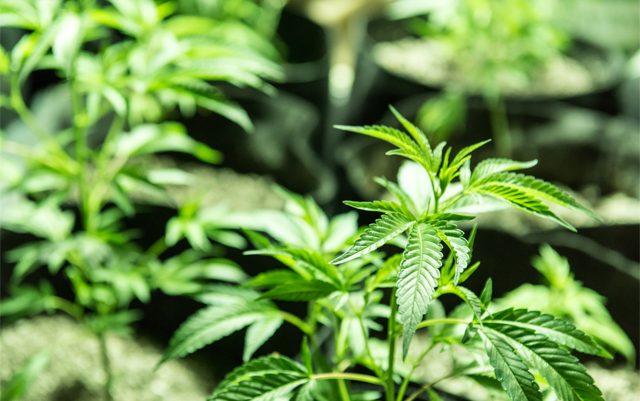Don’t pronounce Molybdenum backwards or you’ll be transported to the 5th Dimension of Mister Mxyzptlk!
As with all chlorosis inducing deficiencies, declaring a lack of sufficient nitrogen is often the first gut reaction to the yellowing cannabis leaves that a lack of molybdenum can produce. However, one important distinction is that with molybdenum deficiency, the yellowing begins mid-way up the cannabis plant, rather than starting with the lower leaves as it does with nitrogen scarcity. Further complicating matters, molybdenum is an essential building block of the enzyme catalysts used by bacteria for nitrogen fixation, the process of transforming atmospheric nitrogen into ammonia. This can take place in a complex symbiotic relationship with a plant via root nodules such as in legumes, or more simply and non-associatively in the surrounding soil. It seems to me then that a molybdenum deficiency could conceivably go hand in hand with an actual decrease in available nitrogen. Research has shown that non-legume parasponia andersonii, a member of the Cannabaceae family, also forms symbiotic relationships using a mycorrhizal receptor. So, considering that cannabis has nitrogen fixing nodule ancestry, it should not be surprising that our favorite medicinal plant has evolved as an obligate mycotroph. Mycorrhizal fungi inoculation should be one of your cannabis horticulture standard operating procedures.
As absolutely vital as molybdenum is to sustain optimal cannabis development, this micronutrient is only required in very small amounts and is well distributed and recycled naturally, so deficiencies are quite rare. Rarer still is the toxicity caused by excessive molybdenum in nature; incorrect application of supplemental molybdenum is the most likely culprit if you notice extremely discolored (even orange!) leaves.
Ed Rosenthal, the Guru of Ganja, states in his Marijuana Grower’s Handbook: “Molybdenum (Mo) deficiency is very rare, but is more likely to occur in color-changing strains in cold temperature conditions…“, but I don’t think that makes sense. Perhaps what Ed has really observed is that when a molybdenum deficiency is present, you are more likely to notice the symptoms in strains which naturally have purpling tendencies and/or have been exposed to chloroplast damaging cold temperatures. This could be because the chlorosis onset is accompanied by a slight reddening of leaf tips and margins prior to curling and browning. The edge scorching is caused by an accumulation of nitrates which would normally be employed in the manufacture of proteins using molybdenum as a catalyst.
Because actual deficiencies of molybdenum in soil are rare, consider testing the pH if symptoms are present. Low pH will lock up molybdenum, so your diagnosed deficiency might actually only be a lack of availability best corrected with soil liming rather than adding more molybdenum. In hydro, a best practice would be a cleansing flush before refreshing with a properly balanced nutrient solution. If you really do need to supplement your cannabis grow with molybdenum, it is available in a wide variety of inexpensive soluble pre-mixes for foliar treatment or root feeding supplementation, including Scotts Miracle-Gro as 0.0005% sodium molybdate. In soil, another easy fix — though slightly more expensive — is Azomite.
Any advice and opinions about the cultivation of Cannabis offered by Bruce N. Goren are his own and do not represent the University of California or the Master Gardener Program.






